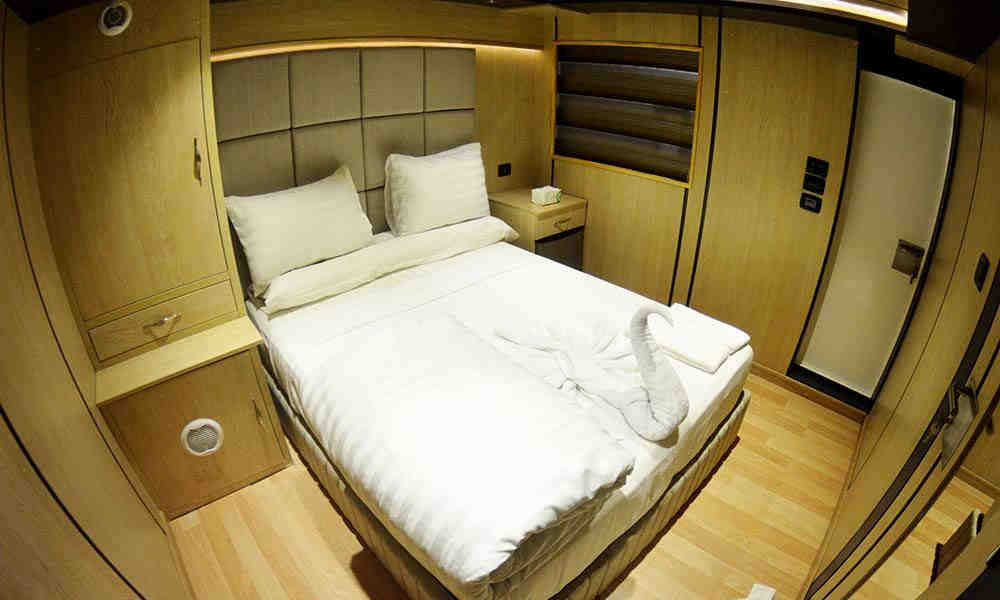M/Y Sea Story
IMPORTANT NOTE: M/Y Sea Story in no longer in operation. Visit our list of Red Sea Liveaboards for some great alternatives, or contact us for a free consultation.
Features & facilities
Boat features & facilities
Dive Deck
Sundeck
Indoor Salon
Air conditioned Salon
Outdoor Dining Area
Dive features & facilities
Air-conditioned salon and dining area
M/Y Sea Story Quick Pitch
The M/Y Sea Story redefines luxury liveaboard diving in the Red Sea. This stunning 44-meter motor yacht, crafted from wood and launched in 2022, combines timeless elegance with modern amenities to create the ultimate dive vacation. Accommodating up to 36 guests in 18 beautifully appointed cabins, including four exclusive honeymoon suites, the vessel offers en-suite bathrooms, air conditioning, and unparalleled comfort.
Why You'll Like the M/Y Sea Story
- Spacious, air-conditioned twin cabins, including four luxurious Honeymoon Suites
- Equipped with a Nitrox system and three Coltri compressors for premium dive support
- Four expansive decks featuring stylish lounges, a dedicated dining area, and sundecks for relaxation
- Powered by twin 1,000 HP Doosan engines for smooth and reliable cruising, backed by a skilled 12-member crew
Dive Overview
Diving in the Red Sea offers an exceptional underwater experience, known for its vibrant coral reefs, diverse marine life, and crystal-clear waters. With its rich biodiversity, divers can encounter everything from schools of colorful fish and large pelagics to stunning macro species. Famous dive sites such as the Thistlegorm wreck, Ras Mohammed National Park, and the Brothers Islands provide opportunities for both novice and experienced divers.
[See: Red Sea Dive Travel Guide]
M/Y Sea Story Cabin Overview
The M/Y Sea Story offers 18 elegantly designed cabins, each featuring air conditioning and en-suite bathrooms for ultimate comfort and privacy. Accommodations include eight lower-deck twin cabins, four main-deck twin cabins, two upper-deck twin cabins, and four Honeymoon Suites for guests seeking an elevated experience. Each cabin is thoughtfully appointed to provide a relaxing retreat after a day of diving, ensuring restful nights and luxurious onboard living.


Food & Drinks Aboard the M/Y Sea Story
Aboard the M/Y Sea Story, guests can indulge in a variety of freshly prepared meals, crafted to suit diverse tastes. The onboard chef offers a mix of international and local dishes, ensuring there’s something to satisfy every palate. From hearty breakfasts to light lunches and gourmet dinners, the dining experience is designed to keep divers fueled and satisfied throughout their adventure.
More information
Practical information
Information
36 Guests
Information
18